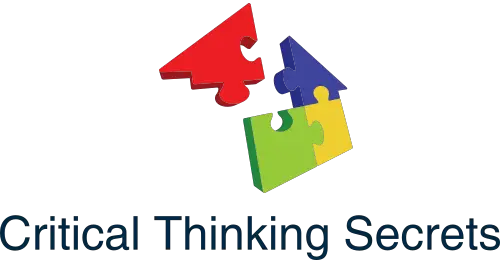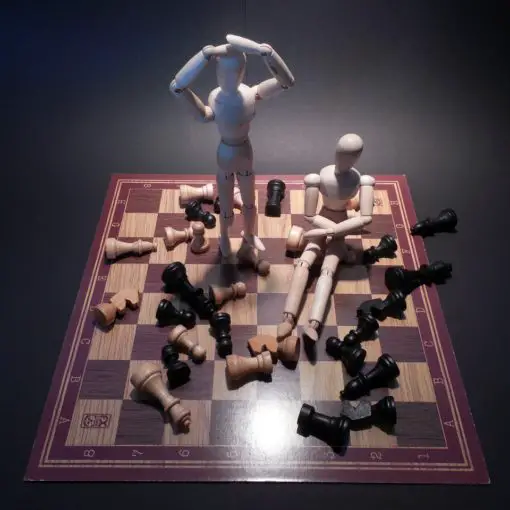Many people believe they understand what critical thinking means, but misconceptions often cloud its true nature.
Critical thinking is not just a set of skills or mental procedures. It encompasses a way of approaching problems and making decisions that involves questioning and evaluating information.
Recognizing these misconceptions is essential for individuals who aspire to improve their analytical abilities.
The role of emotions and biases in critical thinking can further complicate matters.
Many assume that feelings should be left out of the decision-making process, but it is crucial to understand how they influence thought.
By addressing these biases, one can develop a more comprehensive perspective and enhance their critical thinking capabilities.
Awareness of what critical thinking truly entails allows individuals to cultivate this valuable skill effectively.
They can move beyond narrow definitions and embrace a richer understanding that leads to better decision-making in their personal and professional lives.
Key Takeaways
- Critical thinking involves evaluating information rather than simply utilizing skills.
- Emotions and biases play a significant role in the critical thinking process.
- A broader understanding of critical thinking leads to improved decision-making.
Defining Critical Thinking

Critical thinking is often misunderstood. It encompasses more than just basic logic, intelligence, and problem-solving skills. By clarifying these aspects, one can better appreciate the depth of critical thinking.
Beyond Simple Logic
Critical thinking involves more than just applying rules of logic. While logic is essential, critical thinking requires evaluating information from multiple angles.
This includes assessing arguments, weighing evidence, and considering context.
It also requires individuals to recognize biases in information and understand how emotions can impact reasoning.
They must also be willing to change their views when faced with new evidence. This adaptability is a key component in developing strong critical thinking skills.
Beyond Intelligence and IQ
Many mistakenly equate critical thinking with a high intelligence quotient (IQ). While intelligence plays a role, it is not the sole factor.
Emotions, experiences, and education significantly influence one’s ability to think critically.
Critical thinking can be developed through practice and engagement.
It is important to foster environments that encourage questioning and open discussion.
This approach allows individuals to refine their critical thinking abilities outside of traditional measures of intelligence.
More Than Just Problem-Solving
Critical thinking is often associated only with solving problems, but it encompasses a broader range of cognitive skills.
It involves analyzing situations, identifying biases, and contemplating ethical implications.
Critical thinkers employ creative thinking to generate multiple solutions and perspectives.
They also demonstrate reflective thinking by examining their assumptions and learning from past experiences.
This comprehensive approach enriches one’s understanding and decision-making abilities, moving beyond mere problem-solving.
Common Misconceptions
Many people have misunderstandings about critical thinking. These ideas can limit how one approaches problems or learning. Addressing these misconceptions is essential for better engagement with critical thinking skills.
Criticism Equals Negativity
A common misconception is that critical thinking leads to negativity or constant criticism. In reality, critical thinking involves evaluating ideas and arguments fairly.
It is not about finding flaws for the sake of being negative.
Instead, critical thinkers aim to understand different perspectives. They use constructive feedback to improve discussions.
This process can foster innovation and creativity.
Recognizing that criticism can be constructive is crucial. It helps learners to appreciate diverse viewpoints. Thus, critical thinking should be seen as a tool for growth rather than just a form of criticism.
Inherent Trait, Not a Skill
Some believe that critical thinking is an inherent trait that people either possess or lack. This view suggests that individuals cannot develop this skill over time. However, this assumption is misleading.
Critical thinking is a skill that can be learned and improved with practice.
Through education and experience, individuals can enhance their ability to analyze and evaluate information.
Engaging in discussions, solving problems, and reflecting on one’s thinking can strengthen this skill.
The belief that critical thinking is fixed limits personal and professional growth.
Exclusive to Academics and Science
Another misconception is that critical thinking is only relevant in academic or scientific fields. While these areas value critical analysis, thinking critically is essential in everyday life.
People face decisions daily that require evaluating options and understanding consequences.
For example, making choices about finances, health, or relationships often involves critical thinking.
By applying these skills in various contexts, individuals can navigate challenges more effectively.
It is vital to recognize that everyone can benefit from enhancing their critical thinking capabilities, regardless of their career or academic background.
The Role of Emotion and Bias
Emotions and biases significantly affect critical thinking. They can distort judgment and decision-making, leading individuals to conclusions that may not be logical or valid. Understanding these elements helps improve one’s ability to think critically and make sound decisions.
Emotions as Hindrance in Critical Thinking
Emotions can greatly influence a person’s thought processes. When someone experiences strong feelings, such as anger or fear, they may overlook important information or misinterpret facts. This is known as emotional bias.
For example, if a student receives critical feedback, their feelings of defensiveness might prevent them from considering helpful suggestions.
Emotional responses can create filters over perceptions, making it challenging to analyze situations objectively.
It is essential to recognize when emotions are clouding judgment.
Strategies, such as taking a moment to breathe or reflecting on the facts, can help mitigate emotional reactions and enhance critical thinking.
Recognizing and Mitigating Biases
Biases can creep into thinking without one’s awareness. They often cause individuals to cling to preconceived notions, which can hinder objective analysis.
One common bias is the status quo bias, where people prefer things to remain the same, resisting change even when new information suggests a different approach.
Identifying personal biases is a crucial step in improving critical thinking.
This can be done through self-reflection and seeking feedback from others.
To mitigate biases, individuals can employ strategies like considering multiple viewpoints or using structured decision-making processes.
By actively working to recognize and address these biases, individuals can enhance their critical thinking skills and make more informed choices.
Fostering Critical Thinking
Fostering critical thinking involves creating an environment that stimulates curiosity and provides effective strategies for discerning information. This approach encourages individuals to engage actively with ideas and develop their reasoning skills.
Encouraging Curiosity and Inquiry
Encouraging curiosity and inquiry is essential for developing critical thinking skills.
It involves asking open-ended questions that prompt deeper exploration of topics.
For instance, instead of asking a yes or no question, a teacher might ask, “What factors lead to this outcome?”
Using real-life scenarios can spark interest. Role-playing or case studies allow learners to apply their thinking in practical situations.
Additionally, encouraging students to pursue their interests fosters a love for learning and promotes a questioning mindset.
This approach builds a foundation for lifelong learning and critical engagement with various subjects.
Strategies for Developing Critical Discernment
To develop critical discernment, various strategies can be applied.
First, teaching individuals to evaluate sources is crucial. They should ask questions like, “Who is the author?” and “Is the information backed by evidence?”
Discussion groups can facilitate the exchange of diverse viewpoints. This method allows individuals to analyze different perspectives critically.
Another strategy is to practice reflective thinking, where learners assess their own beliefs and biases.
Using tools like mind maps can help organize thoughts and understand complex ideas. Engaging in debates also sharpens reasoning skills.
These strategies create a structured path for improving critical thinking, making it easier for individuals to navigate complex information successfully.
Frequently Asked Questions
Critical thinking is often misunderstood in its application and limitations. Many misconceptions can hinder effective engagement with this valuable skill. The following questions address key misunderstandings and practical concerns related to critical thinking.
What are common misunderstandings regarding the role of critical thinking in education?
Some believe critical thinking is just about being critical or negative. Others think it only applies to higher-level reasoning.
In reality, it is a set of skills that enhances problem-solving and decision-making for all ages and education levels.
How can one identify and address potential problems with their own critical thinking?
Individuals can assess their critical thinking by reflecting on their decision-making processes.
Keeping a journal may help track thought patterns and identify biases. Seeking feedback from peers can also provide valuable insights into areas for improvement.
What aspects are commonly disregarded when engaging in critical thinking exercises?
People often overlook the importance of emotional intelligence in critical thinking. They mainly focus on logic and facts, neglecting how feelings influence decisions.
Additionally, cultural contexts and personal experiences can affect critical thought, but these factors are sometimes ignored.
Are there any negative ramifications associated with overemphasis on critical thinking?
An overemphasis on critical thinking might lead to analysis paralysis. This can result in difficulty making decisions due to constant evaluation of options.
Moreover, it may downplay the value of intuition and creativity in problem-solving.
What are some perceived weaknesses of critical thinking strategies?
Some argue that critical thinking can be time-consuming, especially in fast-paced environments. Others believe that it may not always lead to the best solution because it relies on available information, which can be limited or biased.
In what ways do people typically misapply critical thinking principles?
Misapplication often occurs when individuals focus solely on arguments without considering context. This can lead to misunderstandings. Logic may be prioritized over empathy, which can also cause issues. Furthermore, some may become overly skeptical, rejecting ideas without fair evaluation.





